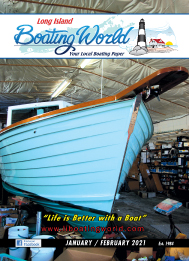
Frank W. Parmele had served four years as Saybrook Breakwall Lighthouse’s head keeper until his reassignment to Castle Hill Light in March of 1890. Standing at the end of a breakwall, at the mouth of the Connecticut River, Saybrook was probably not a sought-after keeper position. Frequently battered in Long Island Sound storms, the 49-foot tall, cast-iron tower, lined with brick, resembled many other similarly built coastal lighthouses. Living in its confines could hardly have been very comfortable, especially during the cold of winter. With the establishment of the lighthouse at Castle Hill, Rhode Island, Frank applied for and was reassigned to the newly built facility. The move to his new post came with a decrease in wages, from $540 to $520 per year. However, for him and his family, the land-based station with its nearby six room keeper’s dwelling and attached summer kitchen no doubt made up for the loss in pay. Located some 300 yards from the lighthouse, the dwelling also had a boathouse and wharf. Unfortunately, the 1938 New England Hurricane’s15-foot storm surge swept away the entire structure, but the lighthouse tower remained intact.

Castle Hill Lighthouse is the smallest, yet one of the state’s most iconic beacons. Standing on a craggy rock wall, some 1.5 nautical miles south of the entrance to Newport Harbor, the lighthouse directs vessels navigating Narragansett Bay’s East Passage.
Founded in 1639, Newport along with “New York, Boston, Philadelphia and Charleston” developed into one of colonial America’s most important ports. During the 1700s, Newport Harbor became a hub in the “Triangular Trade.” Rum produced in the colony was exported to West Africa where it was traded for future slaves. The Africans were transported to the Caribbean and once there, they were exchanged for molasses and sugar. The materials were then shipped to Newport for processing into rum. “Candles, fish, furniture, silver and other goods” also contributed to the colonial harbor’s economic growth.
In 1869, the Annual Report of the Lighthouse Board described the need for a lighthouse and fog signal at Castle Hill. Six years later, Congress appropriated $10,000 for its construction. However, Alexander Agassiz, a well-known industrialist and marine biologist, refused to sell the needed property. He had built an elaborate summer residence and a biological lab on the site and felt that a nearby lighthouse and fog signal would devaluate his estate.
Over the next few years, Agassiz persisted in opposing the construction of a beacon. But, finally on March 20, 1888, he relented, deeding .198 acres to the United States for the sum of $1.00. In that year, Congress appropriated an additional $5,000 for its construction followed by another $5,000 in 1889.
Construction on the thirty-four feet granite tower began in 1889. At its base it measured 21 feet, tapering to 14 feet at its parapet. The cast-iron lantern stood 42-feet above sea level. Equipped with a fifth-order Fresnel lens, showing a flashing red light, the beacon was visible for 10 nautical miles. It began operating on May 1, 1890.
Agassiz soon complained that the station’s fog bell was much too loud! It was discontinued in November, 1891. But four years later, another bell was installed. In a letter to the Lighthouse Board, Agassiz complained that “he was not treated fairly in the matter of a bell at Castle Hill and their agreement had not been kept with him.” The dispute was finally resolved in 1898 when a screen was installed, directing the sound seaward.
Frank Parmele remained keeper until 1911 when he was replaced by George Hoxie who remained on duty until 1944. Following the 1938 hurricane’s destruction of Castle Hill’s keeper’s dwelling, the US Coast Guard built a “Roosevelt style” station house on Ridge Road, east of the Castle Hill Inn. It included a detached boathouse and a marine railway.
On May 5, 1945, just two days before Germany’s surrender in World War ll, Keeper Manuel Marcedo witnessed the sinking of cargo ship Black Point, some 5 miles southeast of Point Judith. Exploding in the aft section of the 396-foot ship, the torpedo quickly sent the vessel to the bottom. Thirty-four of her crew survived; twelve men were lost. The Coast Guard frigate Moberly and Navy destroyers Amick and Atherton were soon on scene. U-boat 853 was sunk in 100 feet of water, just northeast of Block Island.
In 1939, Agassiz sold his entire property to James T. O’Connell, who converted the attractive structure into an inn. During World War II, it functioned as quarters for Naval officers, but following the war, it returned to being an inn. Grace Kelly is said to have resided at the inn during the filming High Society as well as many other famous people. The views from the facility are stunning and there is easy access to the Castle Hill Lighthouse. The light is also accessible from Newport’s Ocean Avenue, near the Castle Hill Inn. Following a short dirt trail to a staircase that leads to the lighthouse, it is worthwhile to make your way down to the surrounding rocks. With the white granite tower in the foreground, look out over the bay and enjoy the beautifully picturesque site. The inside of the lighthouse is not accessible.
Castle Hill Lighthouse continues to operate as a navigational aid, showing a red light for six seconds followed by a dark period of equal length.
